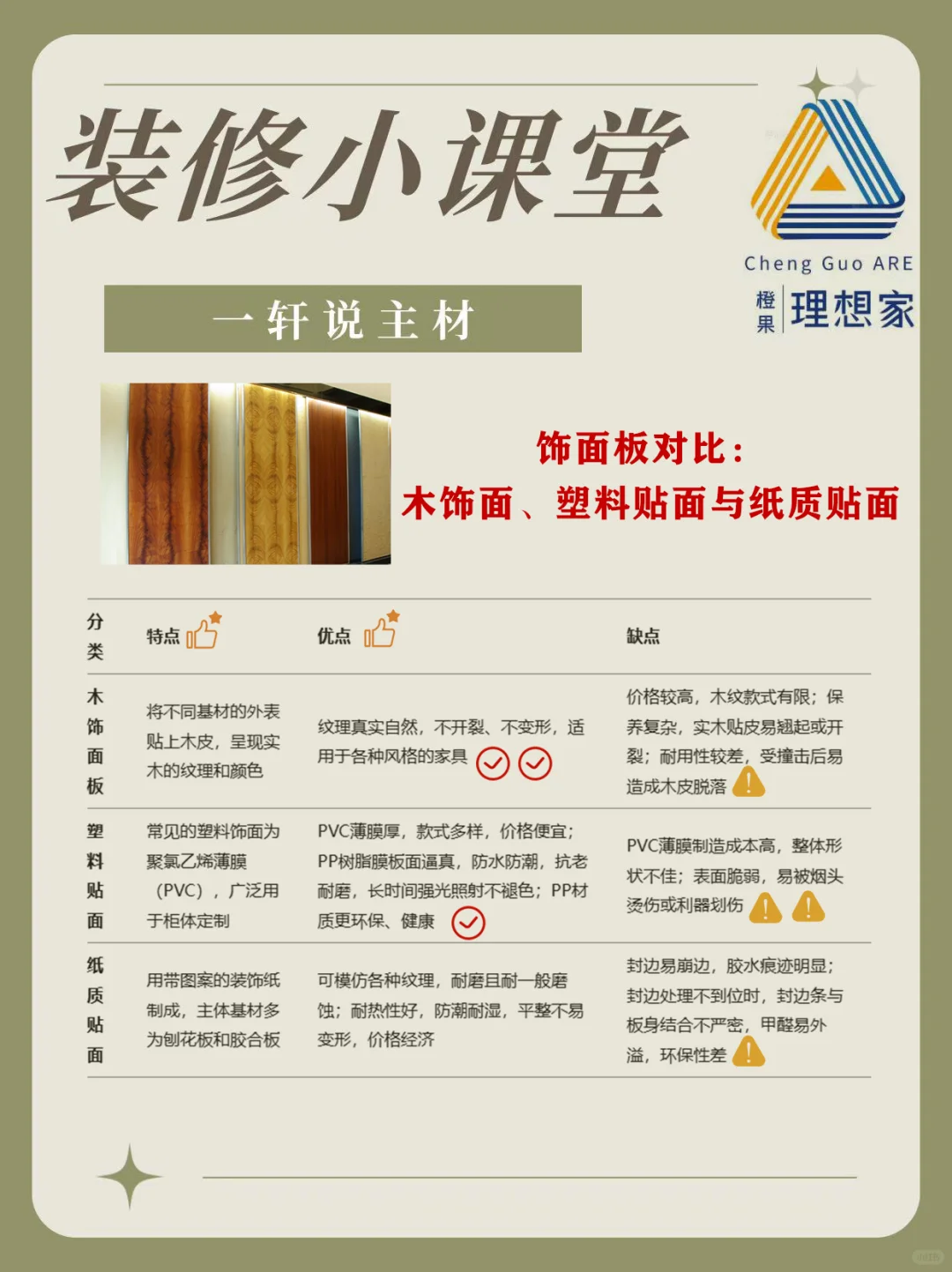
[Veneer] Veneer Pitfall Avoidance Guide is here
 Veneer is a commonly used decorative material in home decoration, widely used in walls, furniture, door panels and other parts. Choosing the right veneer can not only improve the decoration effect, but also ensure durability and environmental protection.
Veneer is a commonly used decorative material in home decoration, widely used in walls, furniture, door panels and other parts. Choosing the right veneer can not only improve the decoration effect, but also ensure durability and environmental protection.
🌟1. What is veneer?
Veneer (Wood Veneer), full name decorative veneer plywood, is a surface material made by slicing natural wood or technological wood into thin slices of a certain thickness, adhering to the surface of plywood, and hot pressing. It is widely used in interior decoration and furniture manufacturing, with a variety of materials, including stone, ceramic panels, metal, wood, etc.
💡2. Classification of veneers
1. Wood veneer
a. Features: The surface of different substrates is covered with wood veneer to present the texture and color of solid wood. Common wood veneers include teak, walnut, maple, ash, etc.
b. Advantages:
i. Made of natural wood, the texture is real and natural.
ii. No cracking, no deformation, suitable for furniture of various styles.
c. Disadvantages:
i. High price, limited wood grain styles.
ii. Complex maintenance, solid wood veneer is easy to warp or crack.
iii. Poor durability, easy to cause wood veneer to fall off after impact.
2. Plastic veneer (polymer coating, blister board, PVC board)
a. Features: Common plastic veneer is polyvinyl chloride film (PVC), which is widely used in cabinet customization, suitable for concave molding, and often used for medium-density fiberboard packaging.
b. Advantages:
i. PVC film is thick, with various styles and low price.
ii. PP resin film board surface is realistic, waterproof and moisture-proof, anti-aging and wear-resistant, and does not fade under long-term strong light exposure.
iii. PP material is more environmentally friendly and healthy.
c. Disadvantages:
i. PVC film has high manufacturing cost and poor overall shape.
ii. The surface is fragile and easily burned by cigarette butts or scratched by sharp objects.
3. Paper veneer (double veneer)
a. Features: Made of decorative paper with patterns, the main substrate is mostly particleboard and plywood.
b. Advantages:
i. Can imitate various textures, wear-resistant and resistant to general abrasion.
ii. Good heat resistance, moisture resistance, flatness and not easy to deform, economical price.
c. Disadvantages:
i. The edge is easy to collapse, and the glue marks are obvious.
ii. When the edge is not properly processed, the edge is not tightly combined with the board body, formaldehyde is easy to overflow, and the environmental protection is poor.
III. Suggestions for the selection of veneers
●Wood veneer: suitable for users who pursue natural texture and have a higher budget, and attention should be paid to maintenance and durability.
●Plastic veneer: suitable for scenes with limited budget and waterproof and moisture-proof requirements, such as kitchens and bathrooms.
●Paper veneer: suitable for economical decoration, but attention should be paid to edge processing and environmental protection
Quick View
You can check what you need
Copyright © 2023 E&R Wood Co,.Ltd All Rights Reserved. Powered By: www.300.cn SEO


 Factory: Zhouwei Village,Yanggongzhou,Shatian Town,Dongguan City,China
Factory: Zhouwei Village,Yanggongzhou,Shatian Town,Dongguan City,China 